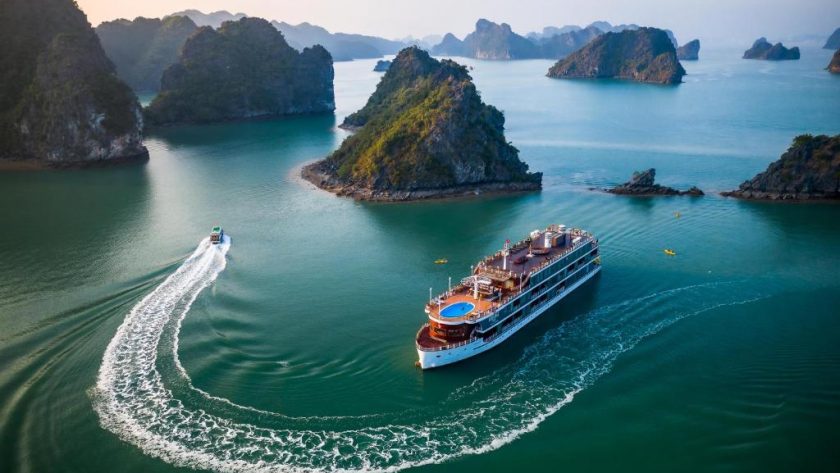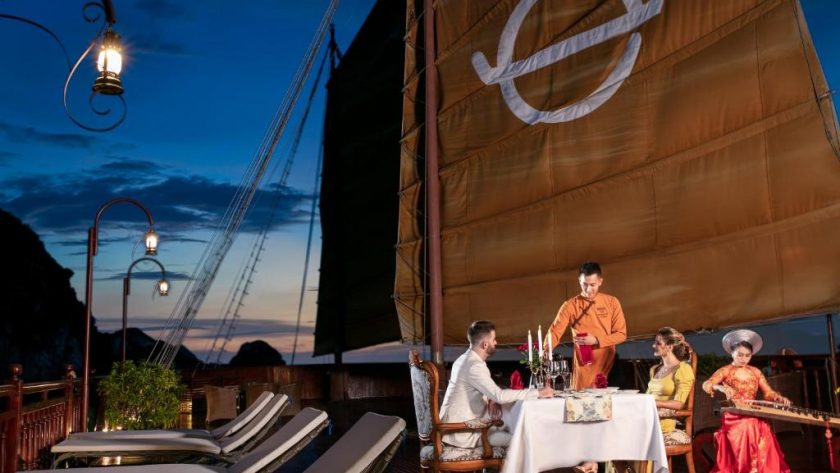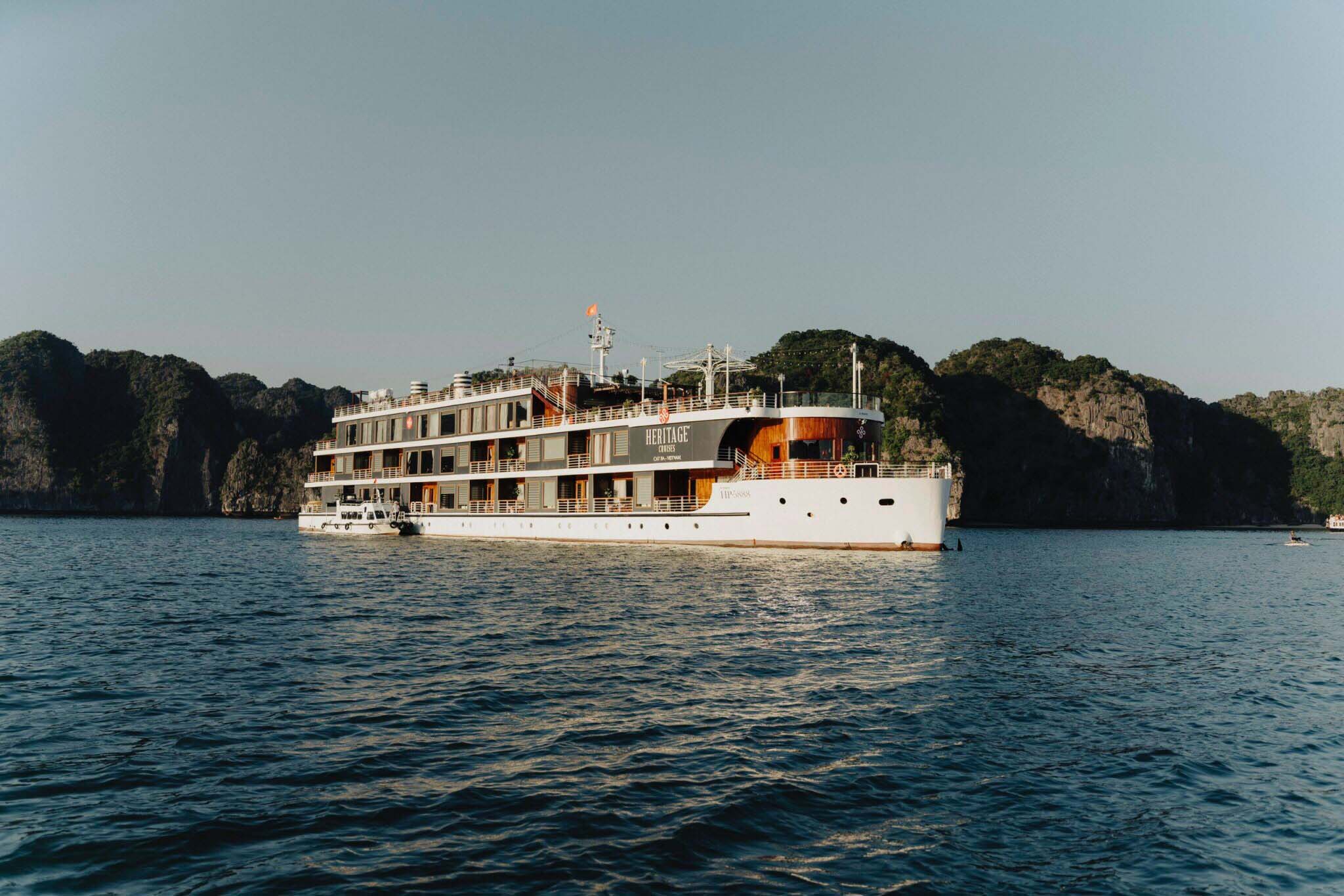
Cultural heritage tourism is pivotal in driving the growth of the global travel industry.
Inspired by the legacy of the Vietnamese King of Cruise Ships, Bạch Thái Bưởi, in the early 20th century, our vision for 2045 is to possess a fleet of 30 yachts and cruises. Our goal is to launch expeditions in the Gulf of Tonkin and broaden our presence between Hanoi Capital and Halong Bay, along the Red River and its tributaries, along Vietnam’s coastline, on the Mekong River, and into other Asian countries.
Since 2014, Lux Cruises Group (www.lux-cruises.com) has been a leader in luxury and innovation. Currently, it comprises 6 yachts, cruises, tenders, and speedboats under two brands: Emperor Cruises (www.emperorcruises.com) with a royal concept and Heritage Cruises (www.heritagecruises.com) with a boutique concept. These vessels operate in the most scenic bays and archipelagos of Vietnam, including Halong Bay, Bai Tu Long Bay, Lan Ha Bay (Cat Ba Archipelago), Nha Trang Bay, and soon Saigon River and Phu Quoc Archipelago.
With enchanting, carefree, award-winning, and heartfelt services, Lux Cruises Group is renowned throughout Vietnam for its artful authenticity, sustainability, and genuine hospitality. We prioritize guest experiences and satisfaction, ensuring a 100% customer satisfaction rate. Explore, learn, respect, celebrate, and enjoy with Lux Cruises! For many travel experts, Lux Cruises Group brings succesfully heritage alive.

Cultural Heritage Tourism: A Catalyst for Global Travel Growth
Cultural heritage tourism has emerged as a significant pillar of growth within the global tourism industry, increasingly recognized for its unique ability to combine the preservation of cultural heritage with the promotion of tourism.
This symbiotic relationship not only fosters a deeper understanding and appreciation of cultural diversities but also contributes substantially to the economic vitality of destinations worldwide.
The Rise of Cultural Heritage Tourism
Cultural heritage tourism’s ascent is fueled by a growing desire among travelers to experience destinations authentically and engage with local cultures. This segment of tourism not only appeals to the curiosity and educational interests of travelers but also supports the conservation of historical sites, traditions, and practices, making it a vital component of sustainable tourism development.
Economic Impact
The economic implications of cultural heritage tourism are vast and varied. It generates revenue, creates jobs, and stimulates local economies. From the preservation of ancient ruins to the celebration of traditional festivals, every aspect of cultural heritage tourism encourages financial investment in the community. Moreover, it diversifies the tourism offer, helping destinations to stand out in a competitive market.

Cultural Preservation and Community Engagement
At the heart of cultural heritage tourism is the preservation of cultural assets. This form of tourism provides the resources needed for the restoration and maintenance of historical sites, museums, and monuments. It also supports intangible cultural heritage, such as music, dance, and craftsmanship, ensuring these traditions are passed down to future generations.
Community engagement is another critical component. By involving local populations in the development and management of tourism activities, cultural heritage tourism fosters a sense of pride and ownership among community members. This engagement not only enhances the authenticity of the visitor experience but also ensures that the benefits of tourism are equitably distributed.
Sustainability and Responsible Travel
Cultural heritage tourism is closely aligned with the principles of sustainability and responsible travel. By emphasizing the conservation of cultural and historical resources, it encourages tourists to adopt respectful and mindful behaviors. This includes supporting local economies, preserving natural environments, and minimizing the carbon footprint of travel.
Challenges and Opportunities
Despite its benefits, cultural heritage tourism faces challenges, including the risk of over-tourism, which can lead to the deterioration of historic sites and cultural artifacts. Moreover, the commercialization of cultural experiences can sometimes dilute their authenticity and meaning.
However, these challenges also present opportunities for innovation in the tourism industry. The development of virtual reality tours, for instance, can help mitigate the impact of over-tourism by providing alternative ways to experience cultural heritage. Additionally, the promotion of off-the-beaten-path destinations can help distribute tourism benefits more broadly and reduce pressure on over-visited sites.
Travel Technology – General The Role of Technology
Technology plays a pivotal role in the growth and development of cultural heritage tourism. From augmented reality applications that bring historical sites to life to digital platforms that facilitate the booking of authentic local experiences, technology enhances the accessibility and enjoyment of cultural tourism. Moreover, social media platforms have become invaluable tools for promoting cultural heritage destinations, reaching a global audience and inspiring travelers to explore new cultures.

Looking Ahead: The Future of Cultural Heritage Tourism
As we look to the future, the importance of cultural heritage tourism within the global tourism industry is only set to increase. With an ever-growing emphasis on sustainable and responsible travel, destinations around the world are recognizing the value of their cultural heritage as a means to attract visitors while preserving their unique identities.
In conclusion, cultural heritage tourism stands as a beacon of growth and sustainability in the global tourism industry. By fostering economic development, supporting cultural preservation, and encouraging responsible travel, it offers a pathway to a more inclusive and sustainable future for tourism. As this sector continues to evolve, its potential to bridge cultures, celebrate diversity, and promote global understanding remains unparalleled, positioning cultural heritage tourism as a key driver of the global tourism industry’s continued expansion and success.



